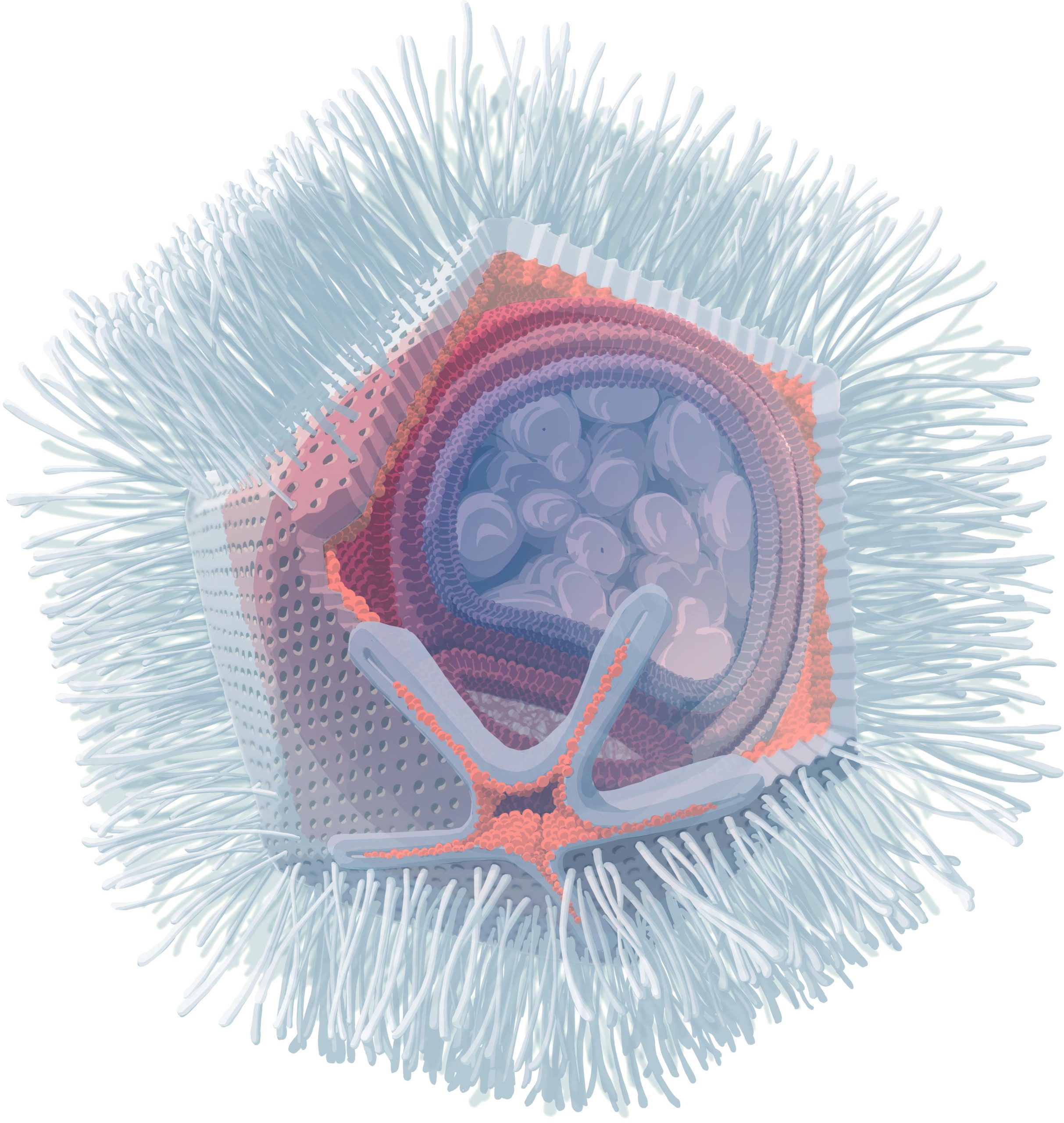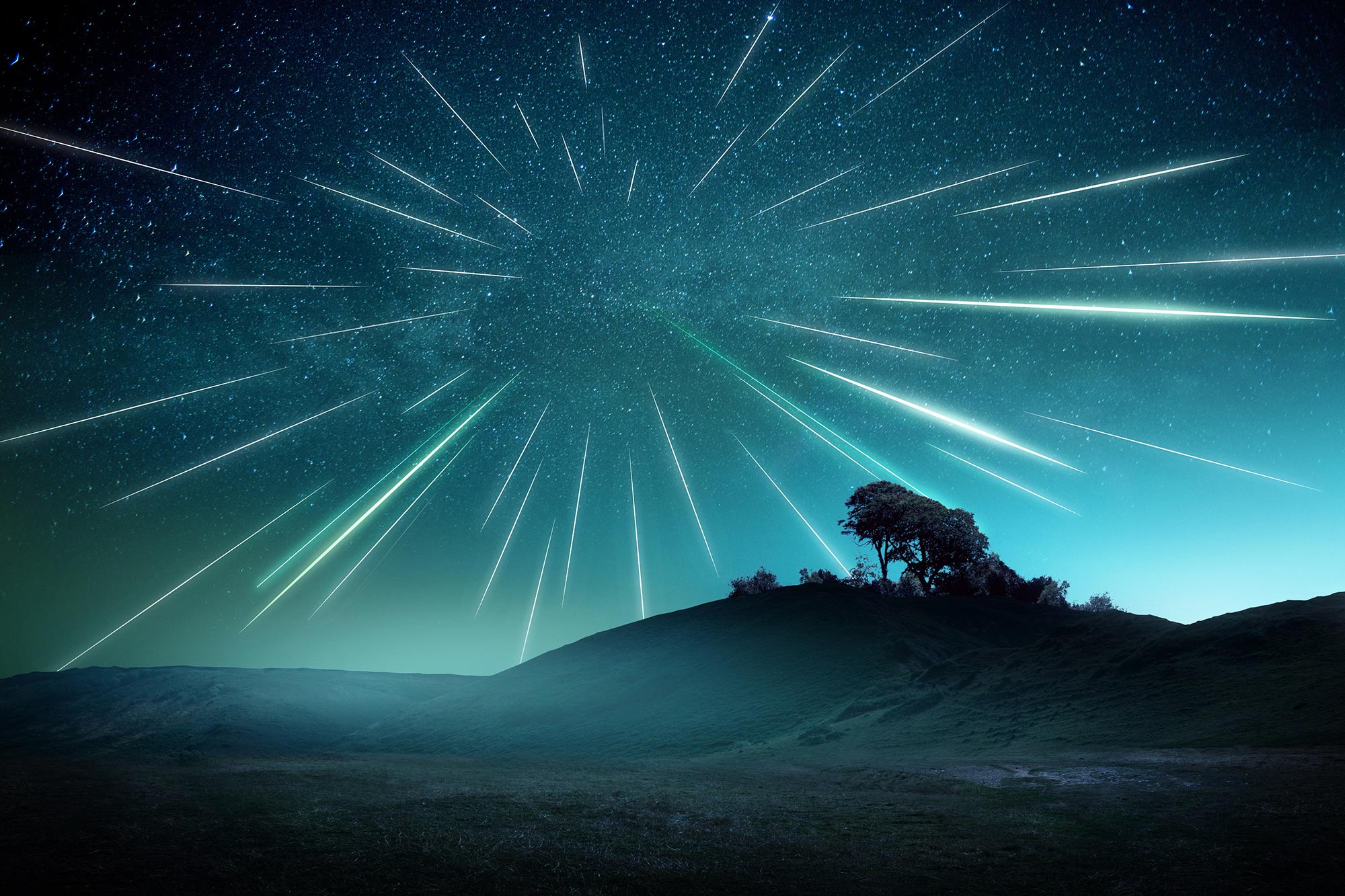A Chuva de Meteoros Lyrids é um evento celeste anual que ocorre quando a Terra passa por um rastro de detritos deixado pelo cometa C/1861 G1 Thatcher. Quando essas minúsculas partículas de poeira e detritos entram na atmosfera da Terra em alta velocidade, elas queimam, criando faixas brilhantes de luz no céu conhecidas como meteoros, ou “estrelas cadentes”. Geralmente atinge o pico por volta de 22 de abril, com 10 a 20 meteoros por hora sendo mostrados em condições ideais de visualização. Batizada com o nome da constelação de Lyra, onde os meteoros parecem ter se originado, a chuva de meteoros Lyrids foi observada há mais de 2.600 anos, tornando-se uma das mais antigas chuvas de meteoros conhecidas. A representação deste artista faz com que a chuva de meteoros pareça mais intensa do que a imagem real.
Quais são alguns dos destaques da observação do céu em abril de 2023?
Mercúrio está em seu ponto mais alto no céu noturno este ano para os observadores do Hemisfério Norte. A Lua faz suas rondas mensais para emparelhar lindamente com muitos planetas. E as condições de visualização podem ser ideais para a chuva anual de meteoros Lyrid, graças à falta de interferência da lua.
Mercúrio, a lua, planetas e meteoritos!
Observe Mercúrio após o pôr do sol no início do mês, siga as visitas da lua com os planetas e pegue uma estrela cadente quando os meteoros Lyrid atingirem o pico em 23 de abril.
Skywatching destaca abril de 2023
- abril 11 – Mercúrio está em seu ponto mais alto no céu noturno para os observadores do Hemisfério Norte. Parece baixo no oeste logo após o pôr do sol [Best viewing is April 3-11, as it climbs a little higher each evening.]
- abril 11-[{” attribute=””>Venus sits near the Pleiades star cluster this evening in the west.
- April 15-16 – Find the Moon near Saturn in the east, in the couple of hours before sunrise.
- April 23 – The crescent Moon hangs just five degrees above Venus in the west after sunset.
- April 25 – The Moon and Mars pair up this evening, high in the west after dark.
- April 6 – Full moon
- April 20 – New moon
- April 23 – The Lyrid meteor shower peaks this morning. Best viewing is between midnight and dawn.
- April 26-27 – The Moon is at it’s first-quarter phase, which is a great time to observe with binoculars or a telescope if you have access to them. Around this time you can observe details in the lunar craters and mountains along the day-night line (the terminator) with ease.
Video Transcript
What’s Up for April? Mercury rising, this month’s Moon and planet pairings, and the Lyrid meteor shower.
First up, on April 11, the planet Mercury – smallest and fastest moving of the planets in our solar system – will reach its highest and most visible in the evening sky for the year.
Mercury is only visible in the sky for a few weeks every three to four months. The rest of the time, it’s too close to the Sun in the sky and is lost in its bright glare. And since the planet orbits so close to the Sun, it’s always near the Sun in the sky, appearing low near the horizon for no more than an hour or two, either following sunset, or preceding sunrise.
Some of Mercury’s fleeting appearances – known as “apparitions” – are better for observing than others, for a combination of reasons that have to do with how our view of the solar system changes with the seasons, what hemisphere you’re in, and what phase the planet happens to be showing us at the time. For this apparition, in the Northern Hemisphere, the best viewing is April 3rd through the 11th, as the planet appears higher in the sky each evening. It quickly fades in brightness after that, as the phase it shows us becomes an increasingly slimmer crescent.
Also on April 11, you’ll find planet Venus right next to the Pleiades star cluster. The two will be close enough to appear in the same field of view through binoculars. This pairing makes for a fun reminder that the night sky is kind of like a time machine – the farther out into space you look, the farther back in time you’re seeing. On that night you’re seeing light that left Venus about 9 minutes earlier, whereas the light of the Pleiades left those stars around 400 years ago.
The latter half of April includes some awesome close approaches of the Moon with three of the bright planets in the sky. On April 15th and 16th, you’ll find the crescent Moon rising with Saturn. Find them low in the southeastern sky in the couple of hours before sunrise. Then on the evening of the 23rd, find the slim crescent Moon hanging just five degrees above Venus in the west after sunset. And on April 25th the Moon finds its way over to Mars, high up in the west after dark.
At this time, around the 26th and 27th, the Moon will be at its first quarter phase, meaning it appears as a “half-moon,” high in the sky after dark. The first-quarter Moon is a great time to pull out your binoculars or telescope, if you have them, as it’s an ideal time to observe the Moon’s craters and mountains along the terminator – the day/night boundary – with ease. Lots of astronomy clubs plan public observing nights around this time as well, and you can look for events in your area with NASA’s Night Sky Network.
April brings the annual Lyrid meteor shower. It’s a medium-strength shower that can produce up to 20 meteors per hour at its peak, under ideal conditions. The Lyrids peak this year in the pre-dawn hours of April 23rd, though you should see a few shooting stars on the morning before and after the peak as well. Fortunately, the peak falls just a couple of days after the new moon. That means the Moon won’t interfere with this year’s Lyrids, overwhelming fainter meteors in the glow of moonlight.
The Lyrids are named for the constellation Lyra, which is near the point in the sky where their meteors appear to come from, called the radiant. They’re one of the oldest known meteor showers, with the first recorded sighting in China some 2,700 years ago. They originate as dust particles from a comet during its 400-year orbit around the Sun.
The Lyrids tend to produce fast-moving meteors that lack persistent trails, but they can also produce the occasional bright meteor called a fireball. To observe them, find a comfortable spot away from bright city lights, get horizontal, and look straight up. You’ll see the most meteors by looking slightly away from the origin point, which is near the bright star Vega.
So here’s wishing you clear skies to catch a few shooting stars one April morning, when the forecast calls for light showers of comet dust, with a chance of fireballs.
Here are the phases of the Moon for April.

The four main phases of the Moon are illustrated in a horizontal row, with the full moon on April 6, third quarter on April 13, new moon on April 20, and first quarter on April 27. Credit: NASA/JPL-Caltech
Stay up to date with all of NASA’s missions to explore the solar system and beyond at nasa.gov. I’m Preston Dyches from NASA’s Jet Propulsion Laboratory, and that’s What’s Up for this month.

“Criador. Viciado em mídia social que gosta de hipster. Fã da web. Fanático por álcool apaixonado.”






More Stories
Vírus gigante incomum descoberto na Áustria
Cientistas de Cambridge revelam uma nova teoria sobre as origens dos blocos de construção da vida
Hubble comemora seu 34º aniversário com uma vista deslumbrante da Nebulosa Little Dumbbell